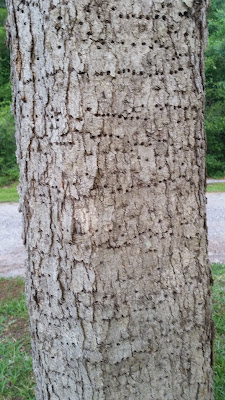Common Names: Cabbage palm, palmetto, blue palmetto, carolina palmetto, common palmetto, swamp cabbage
Latin Names: Sabal palmetto
Type: Tree
Origin: Native
Or Pindo Palm - Butia capitata ...or something else. App says golden cane palm or African oil palm or Canary Island palm
Edible: Heart of the palm is edible but this kills the tree. They say that the fruit outside the seed is edible or can be chewed. If Pindo, can make a jelly from the fruit.Young leaf buds are edible raw or cooked. Oil from the seed is like coconut oil.
--> Fruit part of the seed is very thin and woody. Couldn't eat it.
Other uses: Palm leaf stalk used for fiber. Leaves used to make mats, hats, and baskets. The wood has specific uses.
Note: Tree is drought tolerant, salt tolerant, cold hardy, pest and disease free.
Online I've found a procedure to germinate the seeds. Starting a trial. Took fresh seeds (just fell off tree. However most seeds had already been eaten by wildlife & bugs. None of the seeds looked dark like online pictures. They looked more like green seeds but they had already dropped off the tree and few seeds were left in the tree. Removed the outer skin/fruit on them and soaked in water for 24 hours).
 |
| Palm (June) |
 |
| Palm (June) |
 |
| Palm (June) |
 |
| Palm - fruit (June) |
 |
| Palm (late June) - fruit almost gone |
 |
Palm (late June) - fruit w/ seed
inside |
 |
Palm (late June)
- Fruit/nut almost all eaten and on the ground |





















































